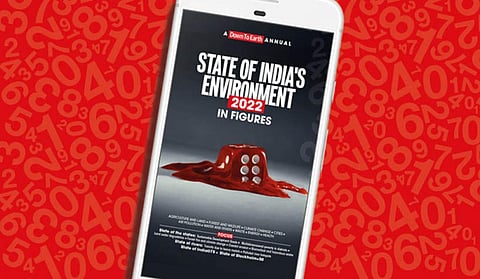

Down To Earth June 2 launched the State of India’s Environment 2022: In Figures. The annual e-book is a unique compendium of data on environment and development assessed, analysed and presented by the magazine along with experts from Delhi-based non-profit Centre for Science and Environment.
The compendium, brought out in the run-up to the World Environment Day (June 5) every year. This year’s launch also coincided with the beginning of Stockholm+50, a global meeting convened by the United Nations General Assembly to commemorate half a century of the 1972 international gathering that discussed human environment for the first time.
This year’s gathering is expected to further the cause of arresting global warming and planning ahead for that. Such planning is heavily dependent on understanding the current situation. The DTE annual and its more descriptive print counterpart can play an important role to that end.
“Most of the data that the volume carries is based on official government statistics that are available in the public domain,” said DTE Managing Editor Richard Mahapatra underscoring the need for steady analyses.
Here are some key data sets in the report and what they say
“Data is about measurement and the better we measure, the better we will get at management — this is what we know and this is why we put together this dataset each year. It helps us make sense of the changes we see in our world; it helps us understand what needs to be done,” said Down To Earth Editor Sunita Narain.
You can purchase your copy here.